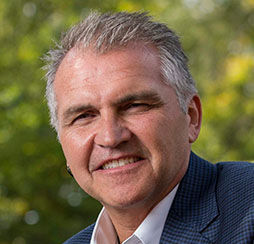One of the reasons I became an addiction counselor and obtained advanced degrees in social work was my awareness that people in power neither resembled nor came from those communities most in need.
In 1990, after I completed a 30-day addiction treatment program in Louisville, Kentucky, I decided that rather than returning to my job as a garbage man, I would enroll in the local community college and get an education. The only way I could pull that off was to enter the VOA – the Volunteers of America – and that meant living in a group home for over two years.
At VOA, I lived with men who were homeless, addicted to alcohol and drugs, and suffering from other disorders. I looked like them, and they looked like me. Which is probably why, when my fellow residents had appointments with people who were supposed to help them, they asked me to accompany them.
Like me, most of these men came from marginalized communities. Most of the “helping” professionals didn’t.
During those days in the early 1990s, the professional’s condescension toward these folks resulted in additional barriers to treatment. These barriers led to unnecessary suffering and exacerbated issues of addiction. Today, such barriers lead to overdose deaths.
Minorities in the St. Louis area now lead the state in opioid-related overdose deaths. If you are black or brown, you are probably unsurprised to hear this. Those leading efforts to tackle the opioid epidemic are also unsurprised. The data have been consistent for decades: minorities and the underserved consistently die from overdoses at disproportionately high rates.
Why?
At Washington University in St. Louis’ Brown School I am proudly associated with two programs that are addressing minority health and wellness issues. The Kathryn M. Buder Center for American Indian Studies is committed to training Native American social work graduate students. The recently launched Collaboration on Race, Inequality, and Social Mobility in America (CRISMA) brings together scholars from multiple disciplines, including psychology, public health and social work, to examine and address the impact of inequality and structural racism.
Both programs focus on still-developing science associated with improving health outcomes in minority communities. However, their most effective mission – and the one related to this discussion – is their focus on training and educating individuals who come from minority communities. It is not enough to rely on the good intentions of decision-makers to ensure that these communities benefit equally and equitably from health-related services. In order to really address health disparities, the folks that need the help must be present and actively participating in decision-making about how best to identify and meet their needs.
Sal Valadez, a labor activist and fellow in the Washington University School of Medicine, states that Missouri’s response to the opioid crisis provides no specific strategies, no specific programs and no dedicated funding to marginalized communities. In what Mr. Valadez calls lazy public health, there is no community member representation on the state’s leadership team.
To address the significant increases in local opioid overdose rates, our first step must be to develop a leadership team that resembles, reflects and accurately represents those beleaguered communities. Even those with the best intentions cannot solve problems that they don’t fully understand.
It’s been said that the disease of addiction has no racial preference; that it’s an “equal opportunity destroyer.” But in real life, the poor and underserved – often people of color – shoulder the largest burdens and face the highest obstacles to receiving the help they desperately want and need.
This is true in part because, unlike the disease of addiction, public health responses do seem to have racial preferences. To be sure, much of this is unintentional, and undoubtedly those charged with addressing such problems genuinely want to save lives and to do good.
But if Missouri is ever to have an equality of response, there needs to be an equality of representation. As long as a racially and culturally homogeneous group of health leaders and decision-makers come solely from ivory towers and governmental offices, and not from the communities in the greatest need, the most marginalized and underserved among us will continue to pay the highest price.
David Patterson Silver Wolf, PhD, is an associate professor in the Brown School at Washington University in St Louis.


















(0) comments
Welcome to the discussion.
Log In
Keep it Clean. Please avoid obscene, vulgar, lewd, racist or sexually-oriented language.
PLEASE TURN OFF YOUR CAPS LOCK.
Don't Threaten. Threats of harming another person will not be tolerated.
Be Truthful. Don't knowingly lie about anyone or anything.
Be Nice. No racism, sexism or any sort of -ism that is degrading to another person.
Be Proactive. Use the 'Report' link on each comment to let us know of abusive posts.
Share with Us. We'd love to hear eyewitness accounts, the history behind an article.